表面粗糙度的激光检测系统设计(CAD,proe三维,电路图)

1.无需注册登录,支付后按照提示操作即可获取该资料.
2.资料以网页介绍的为准,下载后不会有水印.资料仅供学习参考之用.
密 惠 保
表面粗糙度的激光检测系统设计(CAD,proe三维,电路图)(毕业论文24900字,cad图7张,proe三维图,答辩PPT)
摘要
随着现代科学技术的进步和发展,各种超精度加工技术的出现,高质量表面加工得以实现,从而对表面粗糙度的测量提出了越来越高的要求。激光粗糙度检测系统与传统式测量仪相比,原理直观,结构简单,数据处理方便。因此,表面粗糙度的激光检测方法必将成为主要的表面粗糙度检测方法之一,发挥着越来越大的作用。
本文将从光学、机械、电路三个方面着手设计一种表面粗糙度的激光检测系统,真正实现光机电一体化。设计内容包括机械结构、光路系统、电路系统等。检测系统的核心是基于单片机的控制模块,在89c51单片机的编程控制下,检测系统能够实现平面磨床加工零件的表面粗糙度在线分类智能检测,数据的记录存储,以及显示等功能。基于激光检测的表面粗糙度检测系统能够更精确的检测到粗糙度的变化,另外在单片机以及编程控制下,系统可以对材料进行分类测量,显示,并存储数据,更加智能化。
关键词:激光检测;单片机;表面粗糙度;光机电一体化
Design of laser detection system for Surface roughness
Abstract
With the progress and development of modern science and technology, the emergence of a variety of ultra-precision processing technology, high quality surface finish can be achieved, which results in ever-increasing demands on the measurement of surface roughness. Comparing with conventional measuring instrument, laser roughness detection system has the following advantages: the principle is more intuitive, structure is simpler and data processing is more convenient. Therefore, the laser detection method will become one of the major surface roughness detection methods and play an increasingly larger role in the future.
In this thesis, a laser detection system for surface roughness will be designed, which is a real optical mechatronic system. The design elements include mechanical structure, optical system and electrical system. The core of the detection system is based on the control module of the microcontroller. The detection system can achieve surface roughness of the flat grinding machine parts online classified intelligent detection, data record storage, and display functions under the control of 89c51 microcontroller programming. Detection system based on laser can more accurately detect the roughness changes. In addition, under the control of microcontroller and programming, the system can classify the measurement material, display, and store data more intelligently.
Key Words: Laser detection;Microcontroller;Surface roughness;Opto-Mechatronics
本文主要通过应用激光在线检测被加工零件表面粗糙度,在机床加工零件同时,对零件的表面粗糙度做即时的检测,便于工作人员做出判断,对产品质量检测这一环节有突出的效果。很大幅度的提高了零件精加工的精度和效率,生产的自动化程度提高,缩减了工人体力劳动,降低了生产成本,提高了生产效率。同时,通过这次毕业设计,使我对光机电一体化这个领域有了更深的体会,对于专业知识的把握和创新能力也有了提高,开阔了视野,锻炼了处理难题的能力;另外还可以培养我搜集、整理、筛选信息资料的能力以及掌握科学研究的基本方法及科学研究论文的写作技巧与规范。 [来源:http://think58.com]
在这个设计中,把激光、电子、机械等相关专业知识融合到一起,采用合理的传动机构和激光检测装置以及自动控制系统,设计出实用低成本且便于携带的激光在线检测系统,用以即时检测被加工零件表面的粗糙度,以此提高零件的生产效率和产品质量。从而,使零件加工精度和效率提升,节省了劳动力成本[6]。
[来源:http://think58.com]
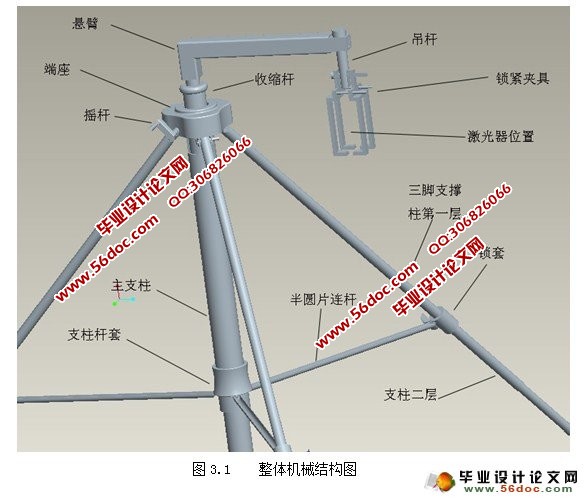
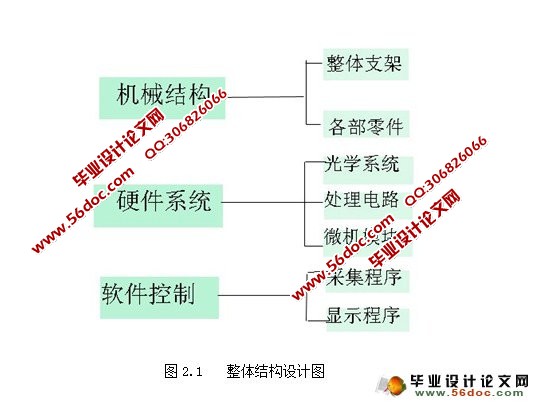
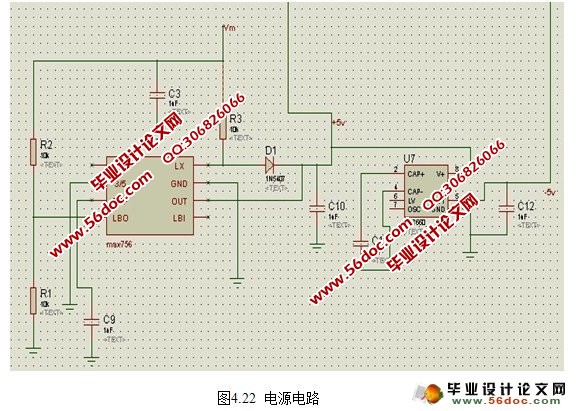
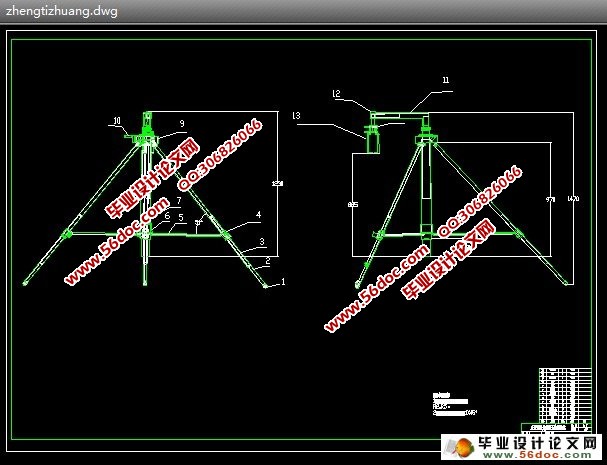
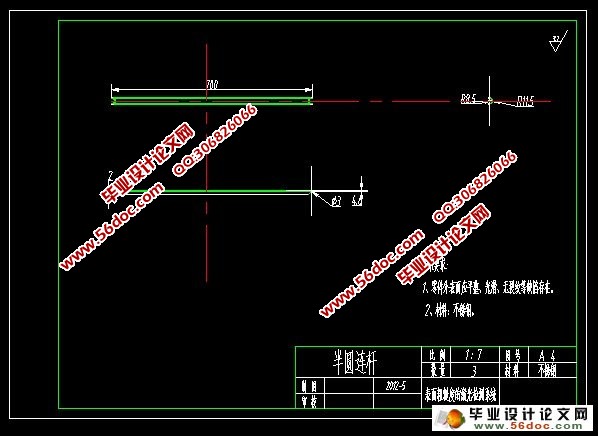 [资料来源:http://think58.com]
[资料来源:http://think58.com] 
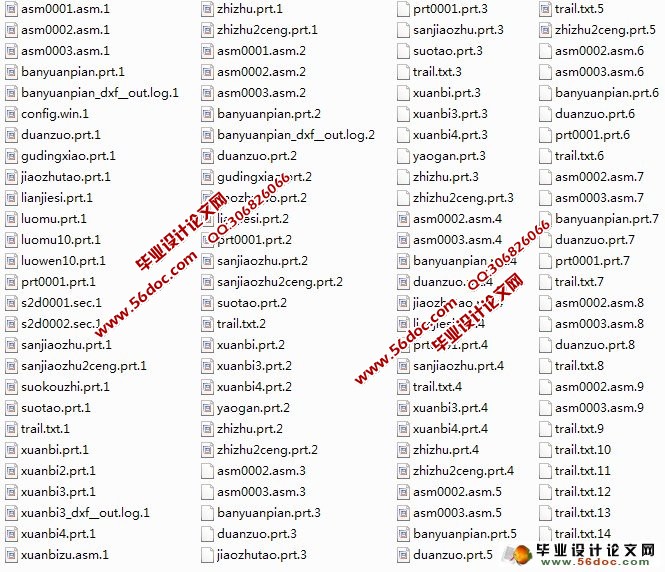
目 录
第1章 绪论 1
1.2 课题研究的背景与意义 1
1.2.1 研究背景 1
1.2.2研究意义 2
1.3 国内外研究现状 3
1.3.1 国外研究现状 3
1.3.2 国内研究现状 4
1.4 本文主要工作 6
第2章 总体方案设计 7
2.1 检测系统的整体结构设计 7
2.2光学检测系统的技术原理 8
2.2.1 激光散射法 8 [来源:http://think58.com]
2.2.2 光在粗糙表面的散射现象 8
2.2.3 几何角度关系 9
2.2.4 激光散射表面粗糙度算法理论模型 12
2.3当前方案的分析与应用前景 15
第3章 机械系统设计 16
3.1整体支架结构的设计 16
3.2尺寸依据与强度校核 17
3.2.1支架外型尺寸的定量依据 17
3.2.2 悬臂的强度校核 18
3.3各部分零件的设计 20
3.3.1 支柱与收缩杆 20
3.3.2杆套和半圆片连杆 20
3.3.3 锁套与三脚支撑柱 21
3.3.4 端座与摇杆 22
3.3.5 悬臂和吊杆 24
3.3.6 可调的锁紧夹具 24
3.4本章小结 25
第4章 硬件设计 26
4.1光学检测模块的设计 26
4.1.1光源的选择 26
4.1.2 仪器基本光路的设计 26
[来源:http://www.think58.com]
4.1.3 光电检测器的选择 27
4.2信号处理电路的设计 30
4.2.1初始信号放大电路的设计 30
4.2.2 A/D转换电路的设计 33
4.3单片机的选型 37
4.4 单片机周边模块的设计 40
4.4.1显示模块 40
4.4.2数据存储模块 44
4.4.3键盘模块 46
4.4.4晶振电路及复位电路 47
4.4.5电源电路 48
4.5本章小结 49
第5章 软件控制 50
5.1采集程序的设计 50
5.1.1键盘扫描 50
5.1.2 ad转换及数据处理 55
5.2显示程序的设计 59
5.3本章小结 62
总结与展望 63
致谢 64
参考文献 65 [版权所有:http://think58.com]
